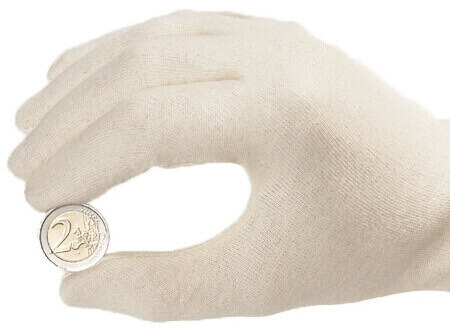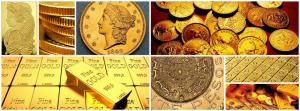How to handle coins properly?
When people begin collecting precious metal coins, receiving the shipment of your first order is a very special moment. It is very tempting to hold your new gold coins in your hands and perhaps even pass them around to the hands of your partner and children. That’s why it is so important for newbie precious metal investors to learn how to handle coins properly.
Many collectors have been shocked to discover that a coin that was unblemished when received, can suddenly display scratches after having been handled manually. Gold is a very soft metal after all and even your fingernails can scratch the surface of it. Holding two coins in your hands together and having them rub together can also cause scratches.
One type of popular gold coin, the Canadian Gold Maple Leafs, have been known for minor scratches just from the way they are packaged in tubes by the Royal Canadian Mint. So this article is dedicated to giving beginning coin collectors some tips on how to handle coins properly.
Whereas the value of bullion coins is close to their melt value, numismatic coins can exceed the value of their precious metal content by far. Historic gold coins as well as special versions of bullion coins (such as proof coins or coins with special privy marks) can have an added numismatic value due to their relative scarcity. A bullion coin will always at a bare minimum have the value of its metal content, no matter how scratched or otherwise damaged it is.
A proof coin on the other hand derives much of its total value from its mirror-like finish. Even a minor scratch to the surface of a proof coin can make its value plummet substantially. That’s why it is so important to handle your coins properly and with great care.
In fact, it would probably even be best to never hold your gold coins in your hands. If you absolutely must hold them, use cotton gloves and only hold them by their edge. The reason for this is that the dirt and oils that you have on your hands might stain the coin surface. If you don’t yet own some white cotton gloves that are recommended for handling coins, you can buy them here on Amazon.
Lower-purity silver coins as well as base metal coins are not nearly as sensitive to being damaged as gold coins. However, since professional gloves are so cheap, you might as well always use them when handling any type of coins in your collection.

Only holding coins by their edges while using cotton gloves is the way to handle coins properly
Secondly, when you are in the process of handling the coin, don’t breathe on it! As you know, your breath contains moisture and keeping your coins dry is very important to prevent oxidization/corrosion.
If you see a red spot on your gold coin, don’t try to rub it off with your saliva. Red spots on gold coins are a very common phenomenon that result from the different cooling temperatures of gold and copper (the alloyed metal in many gold coins such as the American Gold Eagles).
Historic gold coins such as the Saint Gaudens Double Eagles might also develop some kind of patina on their surface over the years. Don’t ever try to clean that off! When you have a look at the websites of some gold dealers like Apmex, you will see that cleaned coins are always listed for much cheaper prices. That is because cleaning the patina from an old coin inevitably removes some of the coin’s material which will result in a design that appears less sharp.
In the few instances that you are obliged to handle a coin (perhaps to show it to a prospective buyer), lay a soft and thick towel on the table beneath you. The towel will protect your coin from being damaged if it happens to fall out of your (clumsy) fingers.
Handle coins properly by using suitable storage solutions
When deciding how to store your coins, many options exist. For the most expensive coins in your collection, you might consider using coin slabs. These are the kind of hard plastic cases that coin grading institutions like the PCGS use for their graded and certified coins. Each coin slab is meant to store one coin but you can then easily order all your coin slabs together in a coin slab storage box. These boxes typically have space for about 20 coin slabs.
Another option for storing your coins are air-tite coin capsules. These are perhaps best suited for coins that you will mostly have stored away like bullion coins as each coin capsule is just a little bigger than the coin it holds. You will save a lot of space storing your bullion coins like that and you can buy air-tite storage tubes for even more storing efficiency. Each tube holds 15 or 20 coin capsules.
No matter what option for storing your coins you choose, it is important that the material of your storage solution is something else than PVC. The reason for this is that PVC reacts to heat and light by decomposing. Hydrochloric acid is released in that process which can severely damage your coins by slowly eating away at their metal content.
These tips are certainly not all-encompassing but they will give beginning precious metal investors a good basic knowledge foundation on how to handle coins properly!


